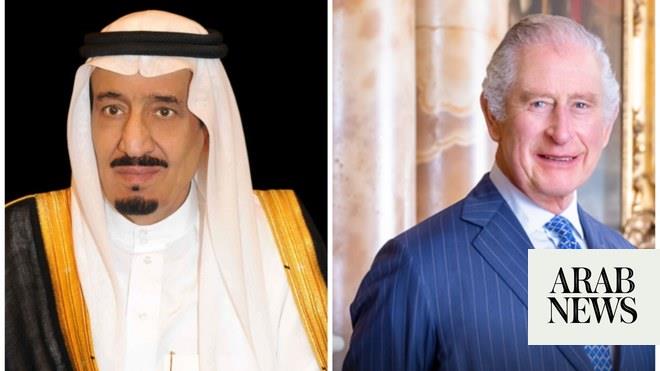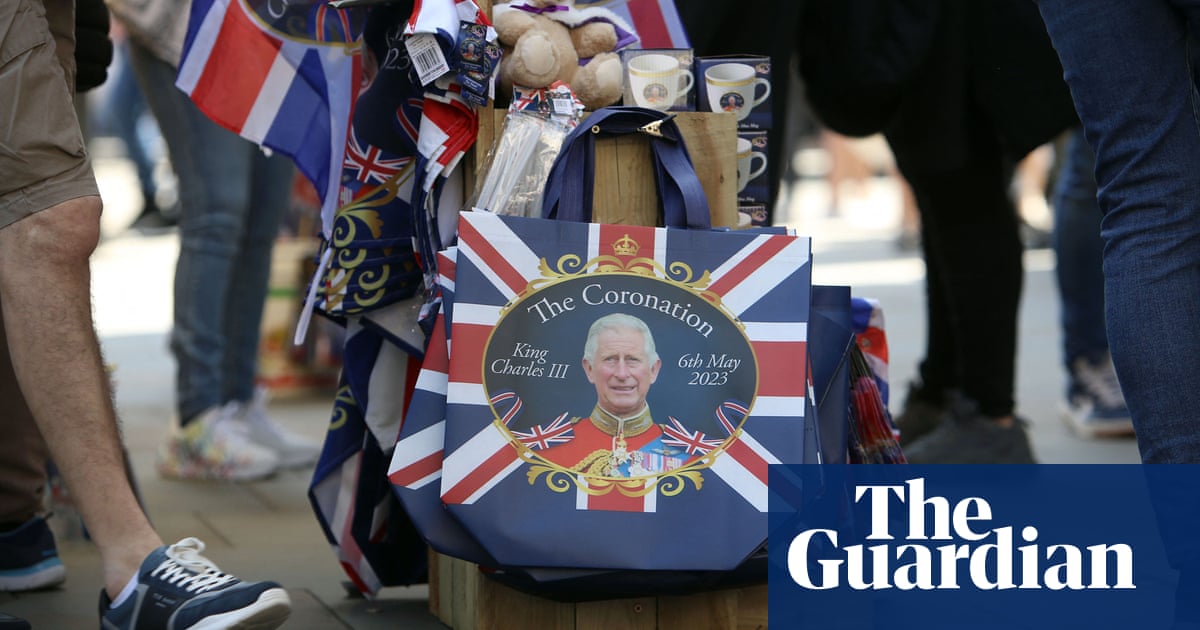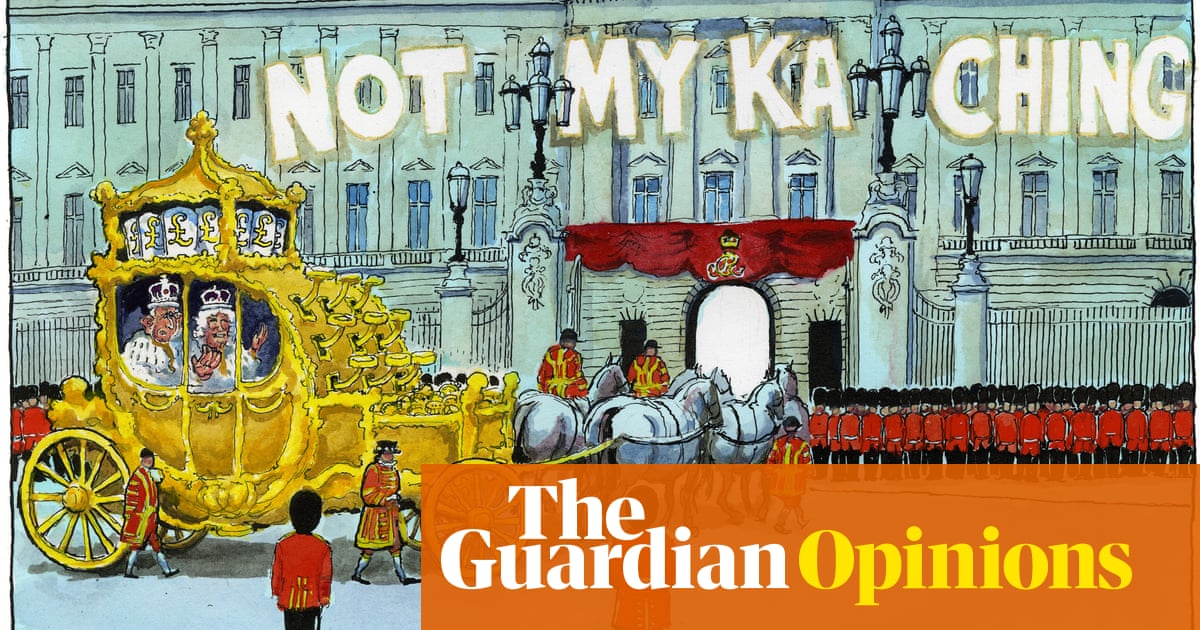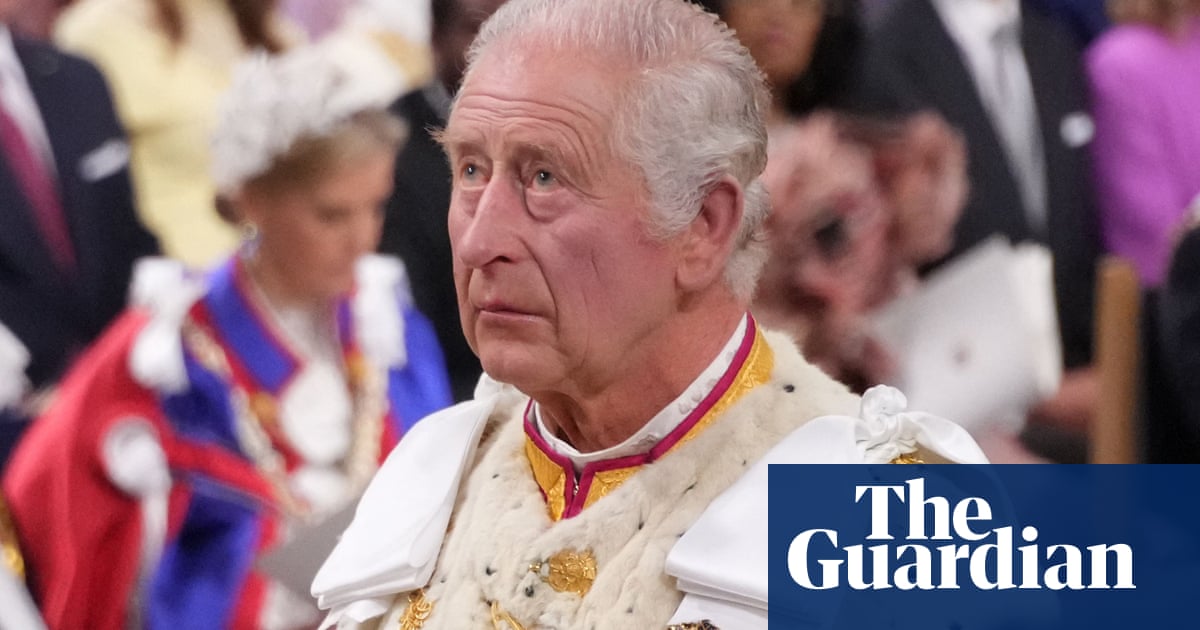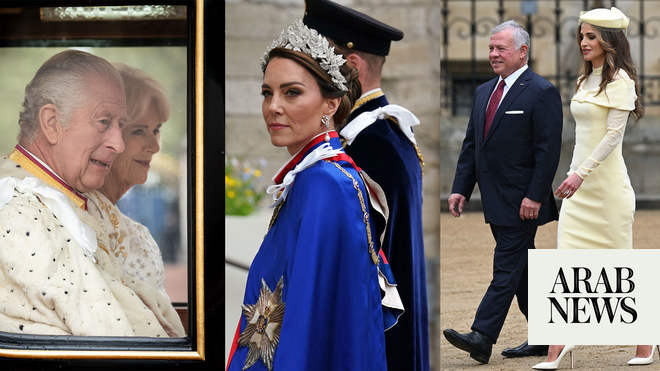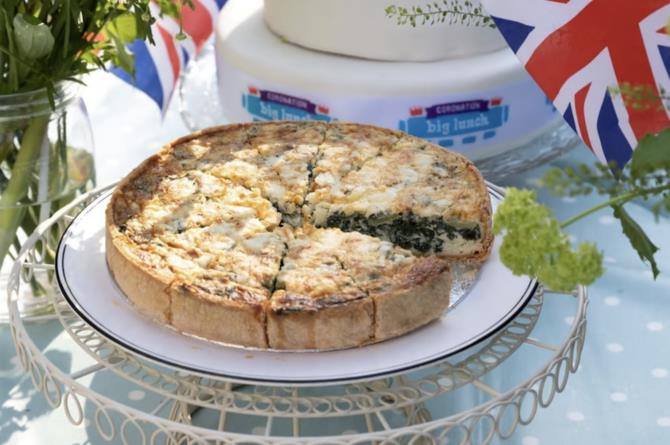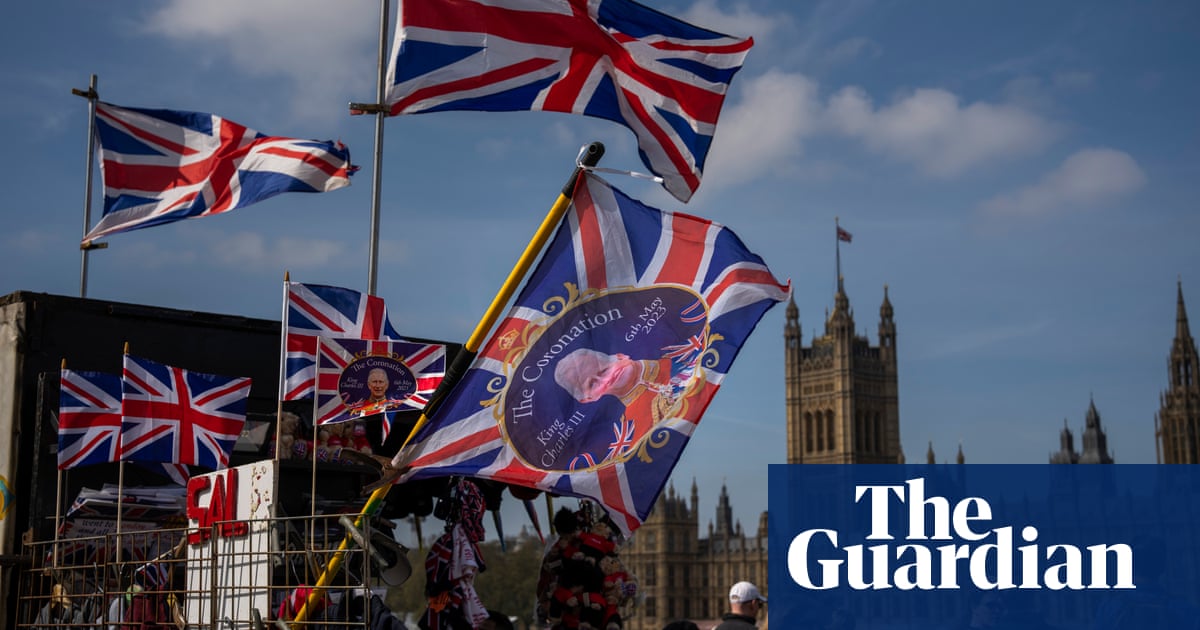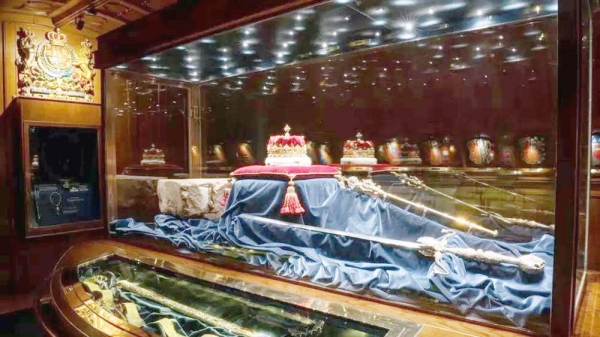
A ceremony in Edinburgh marking King Charles III’s coronation has been targeted by politically significant republican protests led by a Scottish government minister.
The king was presented with Scotland’s medieval crown jewels in a short ceremony at St Giles’ Cathedral, where his late mother, Queen Elizabeth II, lay in rest with the same crown on her coffin last September.
The short event was witnessed by far fewer well-wishers than the vast crowds who thronged the Royal Mile then to watch the queen’s funeral cortege. Many Scots are away on holiday; most onlookers were curious tourists.
As the king and Camilla left their official residence at Holyroodhouse for a short drive to St Giles’, about 100 republicans noisily protested opposite the palace, within earshot of the king’s apartments, at the cost and “extravagance” of the event.
Patrick Harvie, a co-leader of the Scottish Greens and the minister for zero carbon buildings, active travel and tenants’ rights, told protesters that the public money spent on this “rigmarole” and on the coronation in London was unjustified during a cost of living crisis.
“What we’ve seen over the last few months is a genuinely extraordinary attempt to lavish your money, our money, on some of the wealthiest people, not just in this country, but some of the wealthiest people in the world, so that they can do some sort of overpriced Game of Thrones cosplay exercise,” Harvie said. “It is quite extraordinary.”
Having a monarch enriched by untaxed, inherited wealth ran counter to Scotland’s desire for a modern democracy, and an independent Scotland ought to have a directly elected head of state, he added.
Police Scotland said two women aged 20 and 21 were arrested in connection with a breach of the peace after allegedly attempting to climb over a crowd safety barrier on the Royal Mile.
The anti-oil industry protest group This is Rigged claimed the women were their activists, who wore kilts printed with the group’s name.
Police later confirmed four people had been arrested in total, with another four people issued with a warning.
Several mounted troops of Household Cavalry and massed pipers from the Royal Marines and Royal Regiment of Scotland had preceded the king and the queen consort up the Royal Mile towards St Giles’, where the violinist Nicola Benedetti and a Gaelic singer, Joy Dunlop, performed for the couple and selected guests.
Inside St Giles’, the king was presented with the Honours of Scotland, a crown and sceptre dating to the 1540s and a ceremonial sword specially forged for the occasion to replicate the original, fragile sword in the collection.
Nora McGregor, who watched the event near St Giles’ with her 10-year-old daughter, said: “The whole world watches us with curiosity wondering why we still have this tradition.”
“I think most of us really enjoy it,” she added, before gesturing to a group of republican protesters gathered across from the cathedral. “Some just don’t want to admit it. It’s a real shame folk aren’t more accepting.”
Sally Miller had brought her two granddaughters with the promise of watching the horses in the procession, but the pipe bands had caught their interest too. “I think [the ceremony] washes over the youngsters’ heads but I’d like them to see it and remember it,” she said.
Nearby, a second group of republican protesters had erupted into a spontaneous chorus of Flower of Scotland, which celebrates the defeat of England’s King Edward II at Bannockburn, to be met by boos from monarchists. Several rightwing, pro-Brexit unionists had gathered earlier as a counter-demonstration.
Holding a handwritten sign affirming her opposition to the ceremony, 69-year-old Lynda Flex said: “This is the height of nonsense. They’ve already spent all that money down in England when people can’t afford to feed their children. Has he no self-awareness?”
Harvie’s presence, alongside a Scottish National party councillor who criticised the royal family’s past reliance on wealth from the slave trade, marks a distinct shift towards open republicanism in Scotland since Humza Yousaf’s election as first minister in April.
With the king in Edinburgh for the monarch’s Scotland week, a tradition set by the late queen, Yousaf had a private audience with Charles on Monday. And as holder of the ceremonial title of keeper of the Scottish seal, Yousaf took part in the ceremony at St Giles’.
Yet Yousaf has openly declared himself a republican, the first SNP leader of modern times to do so, and proposed that Scotland could hold a referendum on becoming a republic within five years of independence. Such sentiments were suppressed during the 2014 independence referendum campaign; Alex Salmond, the then first minister, insisted Elizabeth would become “queen of Scots” post-independence.
Opinion polls now show marked ambivalence towards the monarchy in Scotland. The British Future thinktank said in May last year that while nearly 60% of voters across the UK wanted to keep the monarchy after the queen died, that fell to 45% in Scotland. In October, YouGov found a near tie in the numbers of Scots who wanted to keep the monarch after independence (41%) and those who would prefer a republic (40%).




